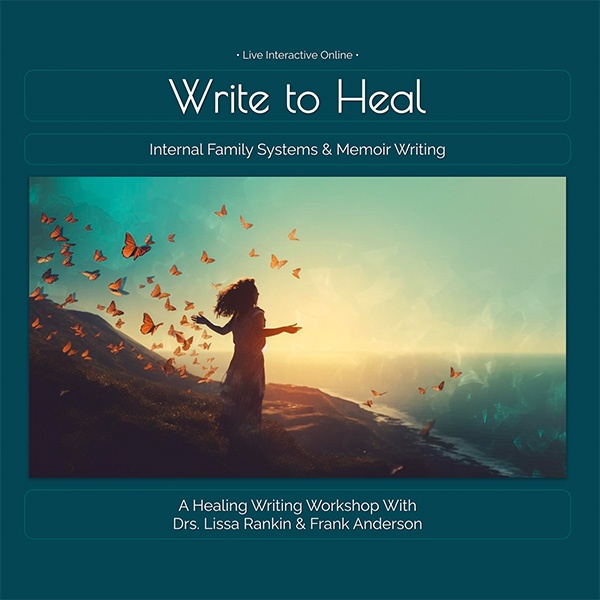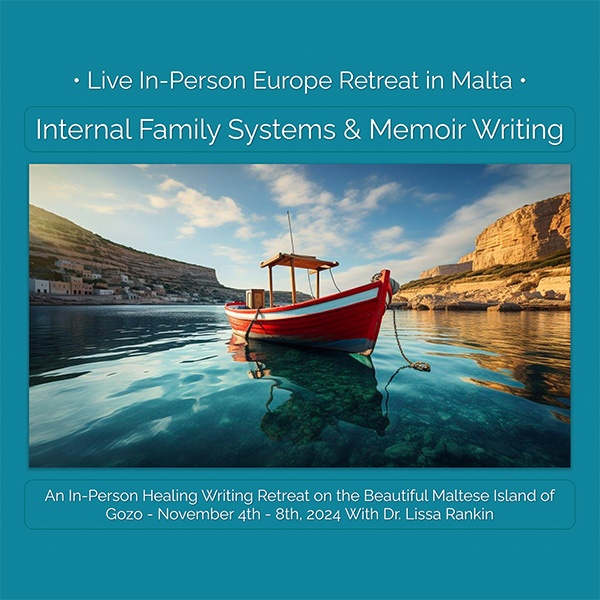Introduction
The Internal Family Systems (IFS) model focuses on building a deep connection with our protector parts to heal our inner children, also known as exiles. These protector parts, which develop as survival strategies in our early lives, may no longer be necessary and can hinder our growth. By understanding and addressing these protector parts, we can access our vulnerable inner children and facilitate a healing process led by our wise spiritual self. This article explores the steps of unburdening and the role of memoir writing in the IFS practice.
Understanding the Protector Parts and Exiles
Within the IFS model, protector parts refer to the aspects of ourselves that try to keep us safe or act out when we feel unsafe. They manifest as our inner critic, worry, addiction, or spiritual bypassing. These protector parts often overshadow our inner children, the exiles, who hold deep-seated pain, feelings of worthlessness, powerlessness, shame, and confusion. The protectors keep the exiles locked away out of fear that their emotions will overwhelm us and hinder our ability to function as adults.
The Goal of IFS: Relaxing Protectors and Connecting with Exiles
The primary objective of IFS is to relax the protector parts, gain their trust, understand their intentions, and create enough space for us to approach the exiles. By establishing a connection with our inner children, we can delve into their intense emotions, beliefs, and memories, also known as burdens. This process, guided by our wise self, leads to a beautiful and heart-opening journey of healing.
The Unburdening Process in IFS
For those unfamiliar with IFS or the unburdening process, here is an overview of the steps involved:
Step 1: Relax & Earn the Trust of Protector Parts
Before approaching the exiles, it is essential to ensure that our protector parts are on board with the process. This can be done by using the 6 F's:
- Find the part in your body
- Focus your attention on it
- Flesh out the part and understand how it believes it's helping you
- Assess your feelings towards the part, looking for curiosity, calmness, compassion, creativity, courage, clarity, confidence, or connectedness
- Befriend the part by asking questions about its role, effectiveness, and desires
- Explore the fears of the part, understanding what it is afraid would happen if it didn't fulfill its role
Once the protector parts have been understood and their trust earned, they can be asked to step back, relax, or give space to proceed to the next step.
Step 2: Connect Exile with Self
Our inner children often feel abandoned and unaware of the presence of our wise, mature self. They may perceive us as younger, less competent, and incapable of caring for them. Introducing the exile to the self, who can act as a nurturing figure, brings about a sensitive and healing moment. This reunion can evoke various emotions, ranging from happiness to mistrust or anger. The process of connecting the exile with self is an integral part of the healing journey.

Step 3: Self Bears Witness to the Exile's Experience
Once the protector parts have stepped aside and created space, our wise self approaches the exiled part within our inner world. With closed eyes, we allow the exile to show us their emotions, memories, sensations, and beliefs. Our self acts as a witness, providing validation, safety, and a sense of being seen and heard. This step is deeply healing and can be incorporated into memoir writing as a means of expressing and processing the experience.
Step 4: Redo What Should Have Happened
In this step, our wise self revisits the past and reenacts the situation, guided by the exile's instructions. Using our imagination, we rewrite the scene, providing the love, support, and guidance that the inner child needed but did not receive at the time. This step can be a creative and empowering process, especially when incorporated into fiction writing. By honoring the exile's imagination, we honor their healing journey.
Step 5: Retrieve from the Scene
After the redo is complete, we rescue the exile from their stuck place in the past and bring them to a peaceful and relaxing environment. The exile determines where they feel safe and peaceful, guiding our wise self to take them there.
Step 6: Unburden
Now, our self and the exile invite the release of toxic beliefs, feeling states, and sensations that have been trapped since the original traumatic event. The exile may choose to let go through elements like wind, water, fire, earth, or light. Memoir writing can serve as a powerful tool during this stage, allowing for a slowed-down and deepened unburdening process.
Step 7: Invite in Qualities That Did Not Develop
We invite the exile to embrace new qualities that were not able to develop due to past trauma. By filling the space created through unburdening with supportive and positive qualities, we facilitate further healing and growth.
Step 8: Check-In with Protectors
Once the exile is settled in their new space with the newly installed programs, we invite the protectors who stepped aside to witness the healing process. The protectors gradually learn to trust the wise self, recognizing its superior ability to protect and heal. The frequency of check-ins with the inner pilot light is determined by the exile to ensure the permanence of the unburdening process.
Step 9: Follow Up with the Exile for 30 Days
Following the unburdening process, it is essential to maintain daily check-ins with the exile for at least 30 days. This period allows for the rewiring of neural pathways and the consolidation of new neural memories. Writing letters or check-ins to the recovered exile each day can solidify this process and support lasting healing.

The Role of Memoir Writing in IFS
Memoir writing can be a powerful companion to the unburdening process within IFS therapy. By incorporating personal narratives
Frequently Asked Questions
Is holistic healing safe?
Holistic Medicine may not be as dangerous as you might think. However, there are many risks involved in using this treatment. Most common side effects are headaches, dizziness (drowsiness), nausea, dizziness or dizziness, constipation, diarrhea, insomnia, and constipation. These side effects should be understood and balanced against the benefits associated with alternative treatments like acupuncture.
However, holistic medicines have not been linked to any deaths.
Before you start any new treatment, make sure to talk with your doctor.
What is Alternative Medicine?
This approach to healing focuses on prevention and not treatment. It also encourages people to become informed consumers actively engaged in improving their health and well-being.
Alternative medicine refers generally to any form of diagnosis or treatment that does away with allopathic (conventional), medical approaches.
What is the opposite of holistic medicine?
Holistic medicine examines the whole person and all its aspects. It recognizes that each illness must have multiple causes, and therefore requires a combination or several treatments to be most effective.
Holistic medicine physicians believe prevention is better then cure. To help patients achieve optimal health, they work closely with them.
They seek to identify underlying causes of disease and prevent it from recurring. Holistic physicians treat the entire body, not just its organs. They often refer to the entire being as “the body.”
This means that they look beyond the skin and treat the body holistically. The doctor may suggest lifestyle and diet changes. He may also recommend meditation or yoga exercises, herbal supplementation, massage or chiropractic treatment, as well as acupuncture and other forms of alternative medicine.
Where can I get more information on holistic medicine?
Holistic medicine focuses on the whole person instead of just one aspect of health care. Holistic medicine is a holistic approach to health care that considers all aspects, including the spiritual, emotional and mental well-being of the patient.
The goal of holistic medicine is to treat the whole person instead of treating individual symptoms. Holistic medicine does not focus on treating the disease, but rather on healing.
Holistic medicine also includes treatments for chronic conditions, such as diabetes and arthritis.
There are many kinds of holistic medicine.
- Acupuncture
- Aromatherapy
- Ayurveda
- Chiropractic medicine
- Homeopathy
- Herbalism
- Naturopathy
- Nutrition
- Osteopathic medicine
- Vedic medicine
- Yoga
What is holistic medicine?
Holistic medicine doctors are those who treat patients holistically. They may combine western medicine with traditional methods like acupuncture and herbs.
They treat the illness, not just the symptoms. The patient should feel better upon completion of treatment.
The doctor should not be limited to treating the disease. He or she must also work with patients to prevent future complications.
“Holistic” is a term that refers all aspects of a person’s life.
Statistics
- The concept of regression toward the mean implies that an extreme result is more likely to be followed by a less extreme result. (en.wikipedia.org)
- In 83% of the cases, the readers agreed. (en.wikipedia.org)
- These studies found that 38.4% concluded positive or possibly positive effects for CAM (12.4%), 4.8% concluded no effect, 0.7% concluded harmful effects, and 56.6% concluded insufficient evidence. (en.wikipedia.org)
- category.[111]Edzard Ernst characterized the evidence for many alternative techniques as weak, nonexistent, or negative and in 2011, published his estimate that about 7.4% were based on “sound evidence.” However, he believes that may be an overestimate. (en.wikipedia.org)
- An assessment of conventional treatments found that 41.3% concluded positive or possibly positive effects, 20% concluded no effect, 8.1% concluded net harmful effects, and 21.3% concluded insufficient evidence. (en.wikipedia.org)
External Links
ncbi.nlm.nih.gov
- BIOFEEDBACK TRAINING and TENSION-TYPE HeADACHE – PubMed
- The Effect of Foot Reflexology on Hospital Anxiety and Depression in Female Older Adults: a Randomized Controlled Trial – PubMed
webmd.com
doi.org
pubmed.ncbi.nlm.nih.gov
- PubMed: The rise and rise in complementary and alternative medicine: A sociological perspective
- Holistic medicine – PubMed
How To
What can a holistic doctor do differently than a traditional doctor?
A holistic doctor provides a wider range of services than a traditional doctor, including a nutritionist, massage therapist, acupuncturist, homeopath, naturopath, etc.
Holistic doctors look at patients holistically. It is a way to address the root cause of health issues, not just the symptoms. This approach helps them identify underlying causes and work towards long-term wellness and preventative measures. Holistic doctors employ natural remedies, such as essential oils and herbs, to treat illness. They can also offer nutritional advice and support healthy living.
In addition, holistic doctors offer therapies like acupuncture, reflexology, reiki, shiatsu, yoga, meditation, hypnotherapy, craniosacral therapy, and many others.
–
——————————————————————————————————————————————
This blog is a source of general information and discussion on health and related topics. Information and materials on this blog, on the website, or in any of the connected materials are not intended to replace or used as a substitute for the advice of a medical professional, diagnosis, or treatment. This blog does not represent the application of any nursing, medical or other health professional advice or diagnosis. We are unable to diagnose health conditions, offer second opinions or provide specific treatment recommendations via this blog or on our website.
If you or another person is suffering from a medical issue and you are concerned, consult your doctor or seek out other medical professional treatment as soon as possible. Do not disregard medical advice from a professional or delay seeking it due to information you seen on the blog or website or in any of the linked materials. If you're experiencing an emergency medical situation, dial 911 or seek emergency medical assistance on the closest phone immediately.
——————————————————————————————————————————————
By: Nicolay Kreidler
Title: The Power of Internal Family Systems (IFS) and Unburdening
Sourced From: lissarankin.com/why-slowing-down-the-internal-family-systems-unburdening-process-can-help-you-heal-via-memoir-writing/?utm_source=rss&utm_medium=rss&utm_campaign=why-slowing-down-the-internal-family-systems-unburdening-process-can-help-you-heal-via-memoir-writing
Published Date: Thu, 21 Dec 2023 00:40:42 +0000
Frequently Asked Questions
Is holistic healing safe?
Holistic Medicine may not be as dangerous as you might think. However, there are many risks involved in using this treatment. Most common side effects are headaches, dizziness (drowsiness), nausea, dizziness or dizziness, constipation, diarrhea, insomnia, and constipation. These side effects should be understood and balanced against the benefits associated with alternative treatments like acupuncture.
However, holistic medicines have not been linked to any deaths.
Before you start any new treatment, make sure to talk with your doctor.
What is Alternative Medicine?
This approach to healing focuses on prevention and not treatment. It also encourages people to become informed consumers actively engaged in improving their health and well-being.
Alternative medicine refers generally to any form of diagnosis or treatment that does away with allopathic (conventional), medical approaches.
What is the opposite of holistic medicine?
Holistic medicine examines the whole person and all its aspects. It recognizes that each illness must have multiple causes, and therefore requires a combination or several treatments to be most effective.
Holistic medicine physicians believe prevention is better then cure. To help patients achieve optimal health, they work closely with them.
They seek to identify underlying causes of disease and prevent it from recurring. Holistic physicians treat the entire body, not just its organs. They often refer to the entire being as “the body.”
This means that they look beyond the skin and treat the body holistically. The doctor may suggest lifestyle and diet changes. He may also recommend meditation or yoga exercises, herbal supplementation, massage or chiropractic treatment, as well as acupuncture and other forms of alternative medicine.
Where can I get more information on holistic medicine?
Holistic medicine focuses on the whole person instead of just one aspect of health care. Holistic medicine is a holistic approach to health care that considers all aspects, including the spiritual, emotional and mental well-being of the patient.
The goal of holistic medicine is to treat the whole person instead of treating individual symptoms. Holistic medicine does not focus on treating the disease, but rather on healing.
Holistic medicine also includes treatments for chronic conditions, such as diabetes and arthritis.
There are many kinds of holistic medicine.
- Acupuncture
- Aromatherapy
- Ayurveda
- Chiropractic medicine
- Homeopathy
- Herbalism
- Naturopathy
- Nutrition
- Osteopathic medicine
- Vedic medicine
- Yoga
What is holistic medicine?
Holistic medicine doctors are those who treat patients holistically. They may combine western medicine with traditional methods like acupuncture and herbs.
They treat the illness, not just the symptoms. The patient should feel better upon completion of treatment.
The doctor should not be limited to treating the disease. He or she must also work with patients to prevent future complications.
“Holistic” is a term that refers all aspects of a person’s life.
Statistics
- The concept of regression toward the mean implies that an extreme result is more likely to be followed by a less extreme result. (en.wikipedia.org)
- In 83% of the cases, the readers agreed. (en.wikipedia.org)
- These studies found that 38.4% concluded positive or possibly positive effects for CAM (12.4%), 4.8% concluded no effect, 0.7% concluded harmful effects, and 56.6% concluded insufficient evidence. (en.wikipedia.org)
- category.[111]Edzard Ernst characterized the evidence for many alternative techniques as weak, nonexistent, or negative and in 2011, published his estimate that about 7.4% were based on “sound evidence.” However, he believes that may be an overestimate. (en.wikipedia.org)
- An assessment of conventional treatments found that 41.3% concluded positive or possibly positive effects, 20% concluded no effect, 8.1% concluded net harmful effects, and 21.3% concluded insufficient evidence. (en.wikipedia.org)
External Links
ncbi.nlm.nih.gov
- BIOFEEDBACK TRAINING and TENSION-TYPE HeADACHE – PubMed
- The Effect of Foot Reflexology on Hospital Anxiety and Depression in Female Older Adults: a Randomized Controlled Trial – PubMed
webmd.com
doi.org
pubmed.ncbi.nlm.nih.gov
- PubMed: The rise and rise in complementary and alternative medicine: A sociological perspective
- Holistic medicine – PubMed
How To
What can a holistic doctor do differently than a traditional doctor?
A holistic doctor provides a wider range of services than a traditional doctor, including a nutritionist, massage therapist, acupuncturist, homeopath, naturopath, etc.
Holistic doctors look at patients holistically. It is a way to address the root cause of health issues, not just the symptoms. This approach helps them identify underlying causes and work towards long-term wellness and preventative measures. Holistic doctors employ natural remedies, such as essential oils and herbs, to treat illness. They can also offer nutritional advice and support healthy living.
In addition, holistic doctors offer therapies like acupuncture, reflexology, reiki, shiatsu, yoga, meditation, hypnotherapy, craniosacral therapy, and many others.

